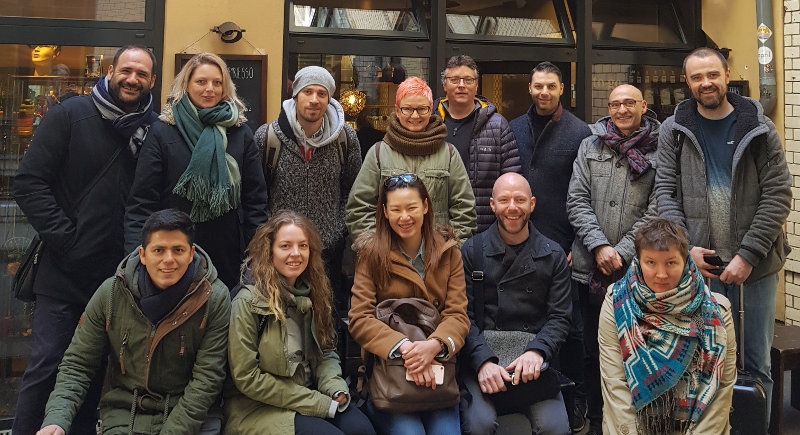
Courses, courses, courses!!
11 April 2019The storage of the coffee cups on the coffee machine is a long-disputed issue: it has been debated ever since the coffee machine was invented and no compelling final word on the issue has been offered yet to clinch the controversy.
My intervention about the storage of coffee cups originates from a survey conducted during a refresher course for SCA certified trainers in Amsterdam: when asked “Who stores the cups right-side up? Who upside down?”, thirty-five of us answered “right-side up”, and 5, including me, said “upside down”.
And yet the lifelong issue cannot be dismissed so simply, besides the coolest trendsetters in the coffee industry are prone to relinquishing the Italian tradition, only to be later apologetic about their decision and possibly reconsider.
In my courses, I thoroughly explain the pros and cons of placing either upward or downward the cups on the coffee machine, but I then defer to the trainees on the question of how to store, because it is serious matter.
Dario: upside down in 99% of cases
Placing the coffee cups right-side up is only mandatory when no plastic or rubber mesh separates the cup-warmer from the cups themselves, which would stop the ceramic or glass rim of coffee cups from getting piping hot and causing scalds to the mouth.
Placing cups right-side up allows for a hotter cup bottom and a cooler rim; nobody has ever claimed that this difference is needed, it rather sounds more like a justification for something inevitable, something that might have originated in competitions in absence of any rubber mesh on top of the cup warmer, but it could also be associated with a machine which does not allow to adjust the temperature of the cup warmer, which leads to picking the less unpleasant of two choices, neither of which is good.
“Cups stored right-side up do not get dusty because dust is blown upwards by the hot air”; in houses or flats endowed with underfloor heating, floors hardly ever get vacuumed at all, but air is. If we accept as a scientific truth that dust fluctuates where it gets lifted by hot air where the cups are stored, we will know that these will act as a lid, hence the dust blown where there are no cups will fall down where the cups are placed, which will make things worse. To keep it short and simple, do ask yourselves the question: “If I place a cup right-side up and leave it there for a week, will I find dust in it?”, and you are likelyt o answe “Well, a whole week…”. I made an experiment placing the cups upside down and nothing much happened….
A further downside in the case of cups resting on the coffee machine right-side up is they are not firmly fixed, plus you are more likely to touch the rims with your hands, extra care is needed when reaching for the handle, which impacts on deft motion and can in turn result in a bit of a waste of time. At busiest times, all these minuses can be a real challenge. If the cups are piled up, the difference between the cups would be bigger compared with the upside down storage. A plus point: they definitely look nicer!
In conclusion: if there is plastic on top of the coffee machine placing the cups upside down is fine; but if the cups rest on metal then right-side up storage is highly recommended. Equally essential are high standards of hygiene and care of the machine, the plastic mesh, and the metal part of the cup warmer as well … oh!, speaking of which it’s high time you go get the cloth on the cups, it must be dry by now!


